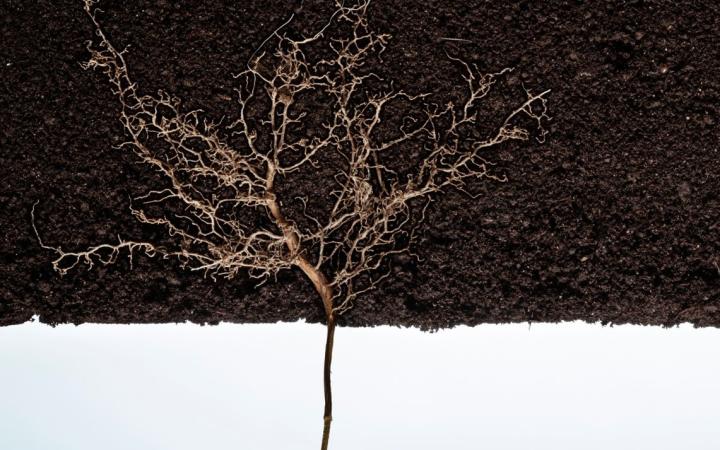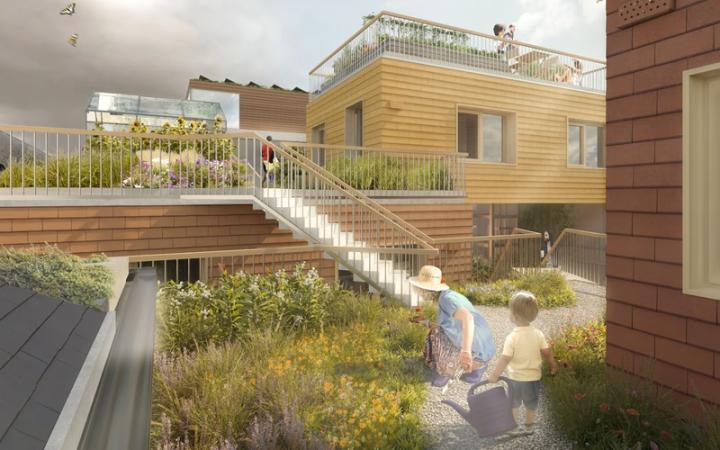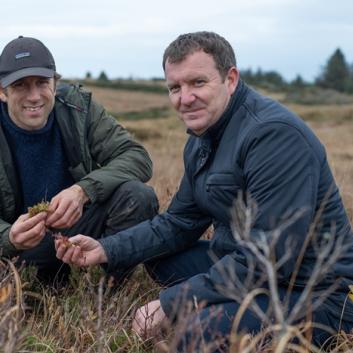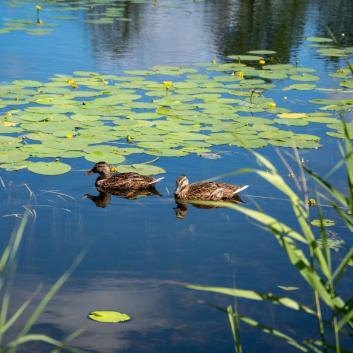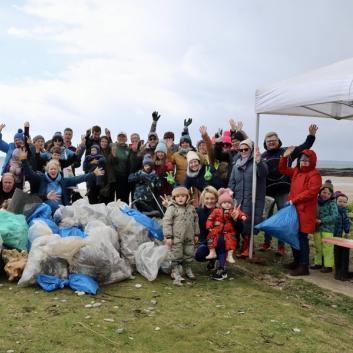How is Dublin utilising parks to make the city greener and more resilient?
As cities grow, access to open green spaces within the city is at a premium, and research has shown that we need nature for our well-being.
Green cities have become a buzzword in the last few years, and this has shifted the approach to designing and managing projects within the Parks Services at Dublin City Council.
These types of cities prioritise environmental sustainability by integrating green spaces and developing sustainable infrastructure in our urban environment besides implementing sustainable water management practices, permeable paving and green infrastructure that mitigate flooding and conserve water resources.
On top of the environmental benefits, cities should champion green spaces, which have been linked to improved mental health and reduced stress levels.
Deirdre Prince, Landscape Architect and Parks Officer for the Central Parks District in Dublin City Council (DCC), works on park projects in the Central District area and highlights that any available green space with the built environment has to work very hard to deliver for all stakeholders.
“The challenge is to incorporate as many environmental uses as efficiently while still creating beautiful spaces for people to enjoy, whether it is creating areas for pollinators, implementing Suds (Sustainable Urban Draining Systems), growing trees to absorb particulate matter or creating amenity space for the public,”
she explains.

Dublin City Council Parks Services are already protecting the natural environment and driving biodiversity in various ways.
They are increasing the urban tree canopy, creating green or wildlife corridors within the city, incorporating green infrastructure into urban planning projects, and eliminating the use of pesticides to protect pollinators and other beneficial insects.
“One area I feel we should pay attention to is the identification of locations within our city that could have potential for habitat restoration, such as wetlands, canals, and riparian zones along rivers and streams. In the current climate, landscape architects need to consider a range of factors to create resilient and sustainable landscapes,” Deirdre shares.
She stresses the importance of designing landscapes that are resilient to the impacts of climate change, such as increased temperatures, extreme weather events, drought and flooding.
“We need to select planting which is drought-tolerant or dry-loving to withstand periods of low or no rain,” Deirdre adds, noting that it also involves incorporating more green infrastructure to manage storm-water run-off and designing adaptable spaces that can withstand changing environmental conditions.
John Stack, Senior Executive Engineer at the Protection of Water Bodies office in Dublin City Council, shares that under the Water Framework Directive, EU member states are required to develop River Basin Management Plans, and each project involves measures and actions to improve water quality.
He also works on several projects that involve nature-based solutions, all of which are at different stages.
One of these is the Santry River Restoration and Greenway Project, a legislative initiative that envisions the future of the Santry River as an attractive river park flowing through North Dublin as an integrated green-blue landscape for ecology and amenity.

“This landscape will become the backbone of a new green infrastructure project to facilitate nature, pedestrians and cyclists and form a route from the biosphere of Dublin Bay to St Anne’s Park to Dublin’s winter hinterlands at Sillogue.”
To ensure that the project met people's needs, they invited locals and communities from the planning phase to suggest what they would like to see in this area and express their concerns. In saying that, he points out that there is hesitancy and apprehension about leveraging nature-based solutions rather than traditional methods due to a lack of understanding of the concept.
“One of my key objectives is to complete some nature-based demonstration projects so that people can just go and look at them. Once they see the benefit of something, they definitely become more open to change,”
John further explains.
He adds that there are situations that allow them to adopt nature-based solutions, but often, they still have to use traditional methods alongside them to meet planning requirements.
John sees the monetary value of preserving and enhancing natural habitats, biodiversity, and clear water, highlighting the importance of a multi-objective approach to handling interconnected issues.
“Where we have habitat loss, we have climate issues, where we have urbanisation, we have biodiversity issues, so it tends to grow wings quite easily.”
Besides water-related considerations, landscape design also has to factor in sequestering carbon dioxide from the atmosphere by planting more trees and other vegetation that store carbon.
One of Deirdre`s favourite projects she worked on in recent years was the development of a new park, Bridgefoot Street Park. This park is located in the Liberties area of Dublin City Centre and was designed by Dermot Foley Landscape Architects.
“Not only was it exciting to create a brand-new park in an area with a large deficit of access to green open spaces, but the park was also built using a variety of reused building materials and materials on the site.”

The aim was to create a playful and exciting urban landscape for all ages while transforming a hard landscape site in the city centre with sustainability at its core.
To stay true to their mission and reduce the amount of construction waste going into landfills, most materials used were moved from other building sites in Dublin.
In the end, 180 new trees, in addition to a mixture of herbaceous and ground-cover planting, have been planted in the park, increasing the urban canopy and assisting in reducing carbon emissions due to the uptake and storage of carbon.
These trees provide much-needed shade for park users and increase the space for biodiversity within the city.

Deirdre adds: “The Bridgefoot Street Park design highlights some important sustainability objectives, demonstrating how we can help to reduce our carbon impact in the design of new public spaces and also how to change the public perception of secondary raw construction materials.”
In 2023, the park development won the prestigious Landezine International Landscapes Award (LILA) in the Public Landscapes category.
The jury highlighted the reasons for selecting this project:
“Bridgefoot Street Park is a story about public space, community participation, circular economy, and ecological measures, and, above all, it is a project that well reflects our growing care for social and environmental issues of urban open space in the 21st century.”
In addition to creating a new green urban area, locals also have a sense of ownership while enjoying the playground and community garden, which adds value to a development like this.
“We have no choice but to move in this direction, and working with nature is the key to achieving climate targets and creating more liveable and sustainable cities.”



